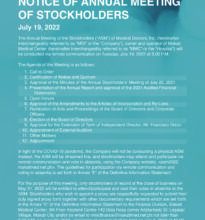Ballots printed without observers: How come?

There are, as I write this column, about 57 days before the May 9 national and local elections. The elections will mark the culmination of all the work at planning and carrying out hard-fought campaigns in many instances.
National campaigns are normally planned a year or two in advance under normal circumstances. Exceptions are the presidential snap polls in 1986 decreed by Ferdinand Marcos at the behest of the Americans and other democracies who were alarmed at the continuing political unrest and subsequent economic damage triggered by the execution of former senator Benigno Aquino as he returned from exile in the United States. Another exception is the seemingly belated decision of Vice-President Leni Robredo to contest the presidency against Marcos Jr. who had prepared his ground organization and media campaign and messaging, through historical falsification, as early 2017.
Whether one has eyed a position several years before the election or less than a year before election day, a sensible candidate and his/her handlers have to come up with an overall plan whose component parts are further subdivided and broken down into parts that are carried out eventually by a working organization on the ground.
All serious campaigns start with research or data acquisition and gathering. This is the basic first step, whether done with exacting rigor or with rudimentary techniques. As early as 1971, I remember then-senator Ninoy telling me of his plans to run for president in 1973 under the then 1935 Constitution which prohibited Marcos Sr. from being president beyond 1973. I was then doing my Management Research Report (MRR), a prerequisite for graduation at the Asian Institute of Management (AIM), on “Image Management in the 1967 Senatorial Campaign of Senator Benigno S. Aquino, Jr.” It was in the course of preparing this paper that Senator Ninoy revealed to me some of his preparations for the 1973 presidential elections.
At the core of his preparations was an IBM Mainframe which stored data that Ninoy and his American and Filipino campaign strategists felt were essential to planning and eventually mounting a no-nonsense campaign. Interestingly, the research work starts with the candidate: family background; experience in private and government administration; performance as mayor, governor, and senator; potential issues and all other data including so-called skeletons in the closet which may surface if one is confronted by an equally research-oriented opponent. Basic to this element of the total plan is research on possible opponent(s). I recall Ninoy pulling out the originals of several yellow columnar sheets pasted together. The most prominent initial in that sheet was “FL” which could have meant First Lady Imelda Marcos, or Fernando Lopez, the then vice-president of Marcos Sr. Lopez, a member of the economically and politically powerful clan, had been removed as Secretary of Agriculture and Natural Resources by Marcos in 1969 as the relationship between Marcos and the Lopezes soured.
Research, conducted by foreign and local groups, is very much part of the Marcos Jr. campaign as the handlers of the dictator’s son addressed a major part of the electorate which were too young to have knowledge of and experience with, illegal arrests, abductions, kidnappings, torture, rigged plebiscites, massive cheating and terrorism during elections, cheating supervised by the Constitutional body mandated to administer and manage elections, media censorship, Imeldific extravagance, People Power, presidential decrees, Amendment No. 6, economic hardship, and other horrors of Marcos rule. These young men and women were the main objects of historical falsification which anti-Marcos forces took some time to correct.
My own experience with other communications campaigns is that the expense involved is directly proportional to the lies, the type of lies one disseminates, and the fact twisting one has to do. One social media practitioner stated that “telling the truth is much less expensive than concocting lies and ensuring the consistency of the lies. Usually, liars end up contradicting themselves and it becomes more expensive to undo the lies, scramble and cover it up.”
And because the lies have to be passed off and packaged as truth, the influencers have to keep on repeating the lies, almost ad nauseum. To support the lies, a few embellishments are needed to create that “feel good” feeling. Usually, flag-waving and “love of country” messages are used to distract people from the core issues and to change the narrative.
Issues are surfaced, either through focus group discussions or actual polling or variations of the latter. Veteran politicians will always say “we know the people” and often dismiss such research as a “waste of time or paying to get information I already know.”
It is important to have a fairly good idea of issues because such information is crucial for conserving one’s resources. A solid idea of issues for a particular geographic area and demographics allows one to sharpen one’s messaging. A message that tries to cover too many issues and different demographics will result in a diffused message that promises everything to everyone and will therefore not appeal to anyone or to the number of voters one desires or has set as a target.
As the campaign enters a most crucial stage, with certain candidates creating momentum while others are fading after a very strong start, we can expect more frenzied activity at the ground level. It is at this point that a candidate’s ground organization is tested and will be given a chance to prepare for the actual day where mobilization will be a key factor.
Even as candidates and their supporters and thousands of genuine, not paid, “volunteers,” ramp up their respective operations, we must continue to be vigilant and monitor the acts and statements of the Commission on Elections (Comelec) which has managed to shoot itself in the foot repeatedly.
The latest episode is an admission by its commissioners made under oath during a Senate hearing on March 9. In that hearing, the Comelec admitted that it had caused the printing of 65% of the ballots and configured Secure Data (SD) cards in most regions without observers or away from public view. These revelations have further eroded the public’s faith in Comelec’s sincerity to have clean, honest and transparent elections.
Citizens’ groups have raised a collective howl. And rightly so. After all, clean, honest and transparent elections is the essence of democracy. There can be no democracy without consent of the governed.
If uncorrected immediately and transparently, these and other perceived lapses of the Comelec can radically change the course of events in the country.
Philip Ella Juico’s areas of interest include the protection and promotion of democracy, free markets, sustainable development, social responsibility and sports as a tool for social development. He obtained his doctorate in business at De La Salle University. Dr. Juico served as secretary of Agrarian Reform during the Corazon C. Aquino administration.




